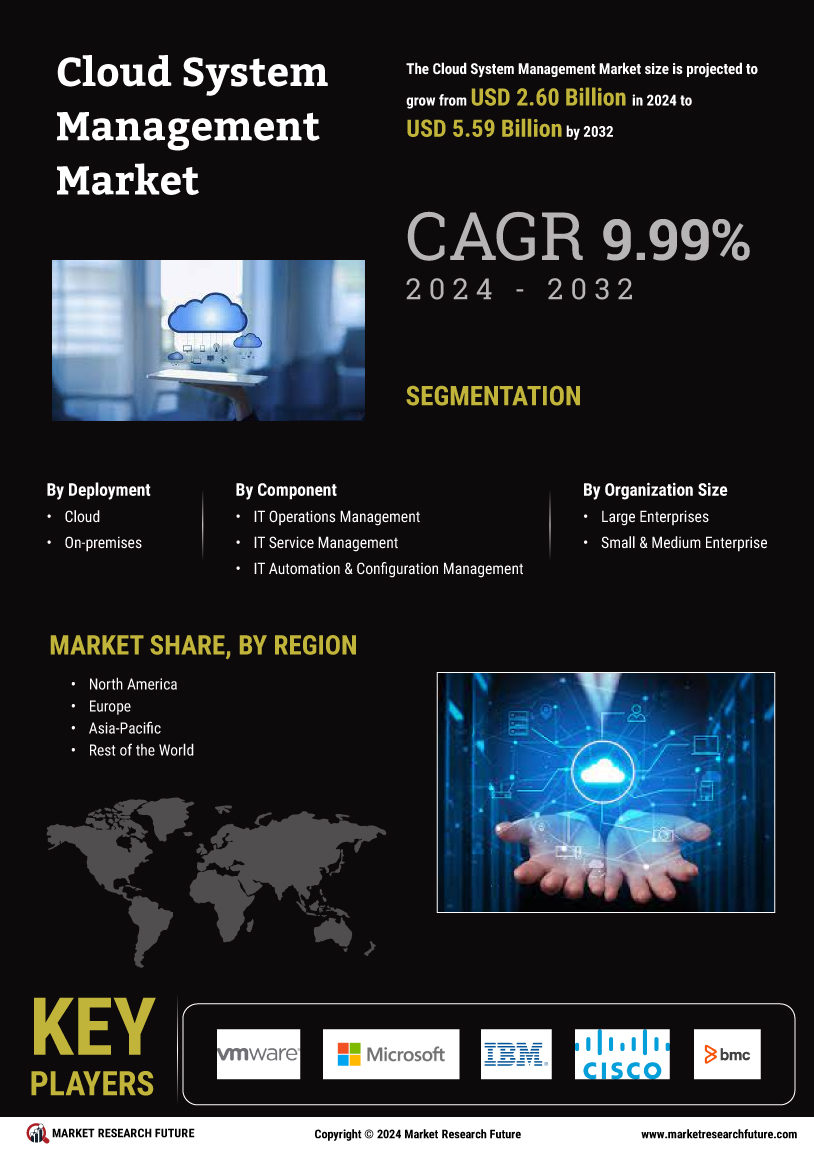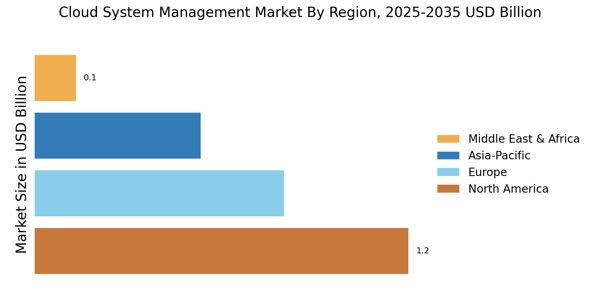Rising Demand for Scalability
The Cloud System Management Market experiences a notable surge in demand for scalable solutions. Organizations increasingly seek to expand their IT infrastructure without incurring excessive costs. This trend is driven by the need for flexibility in resource allocation, allowing businesses to adapt to changing workloads. According to recent data, the market for cloud management solutions is projected to grow at a compound annual growth rate of approximately 25% over the next five years. This growth indicates a strong preference for systems that can efficiently manage resources across various cloud environments. As companies transition to cloud-based operations, the ability to scale resources seamlessly becomes a critical factor in their operational strategy, thereby propelling the Cloud System Management Market forward.
Shift Towards DevOps Practices
The adoption of DevOps practices is significantly influencing the Cloud System Management Market. Organizations are increasingly integrating development and operations teams to enhance collaboration and streamline processes. This shift facilitates faster deployment of applications and services, which is essential in today’s competitive landscape. The use of cloud management tools that support DevOps methodologies allows for continuous integration and delivery, improving overall efficiency. Market data suggests that companies implementing DevOps practices can achieve deployment frequency that is 30 times higher than those that do not. As the demand for agile and responsive IT environments grows, the Cloud System Management Market is likely to benefit from this trend.
Enhanced Data Security Measures
In an era where data breaches are prevalent, the Cloud System Management Market is witnessing a heightened emphasis on data security. Organizations are increasingly aware of the risks associated with cloud computing and are seeking robust management solutions that prioritize security. The implementation of advanced security protocols, such as encryption and multi-factor authentication, is becoming standard practice. Recent reports indicate that the global market for cloud security solutions is expected to reach USD 12 billion by 2026, reflecting the growing importance of security in cloud management. As businesses strive to protect sensitive information, the demand for secure cloud management solutions is likely to drive growth in the Cloud System Management Market.
Growing Focus on Cost Efficiency
Cost efficiency remains a pivotal driver in the Cloud System Management Market. Organizations are increasingly scrutinizing their IT expenditures, seeking solutions that provide maximum value for their investments. The shift towards cloud-based systems allows businesses to reduce capital expenditures associated with traditional IT infrastructure. According to market analysis, companies that adopt cloud management solutions can achieve up to 40% savings in operational costs. This financial incentive encourages more enterprises to explore cloud management options, thereby stimulating growth in the Cloud System Management Market. As businesses prioritize cost-effective strategies, the demand for efficient cloud management tools is expected to rise.
Integration of Artificial Intelligence
The integration of artificial intelligence (AI) into cloud management solutions is transforming the Cloud System Management Market. AI technologies enhance automation, predictive analytics, and decision-making processes, allowing organizations to optimize their cloud resources effectively. By leveraging AI, businesses can analyze vast amounts of data to identify patterns and anomalies, leading to improved performance and cost savings. Recent studies suggest that AI-driven cloud management tools can reduce operational costs by up to 30%, making them an attractive option for enterprises. As AI continues to evolve, its role in the Cloud System Management Market is likely to expand, offering innovative solutions that address complex management challenges.


















Leave a Comment